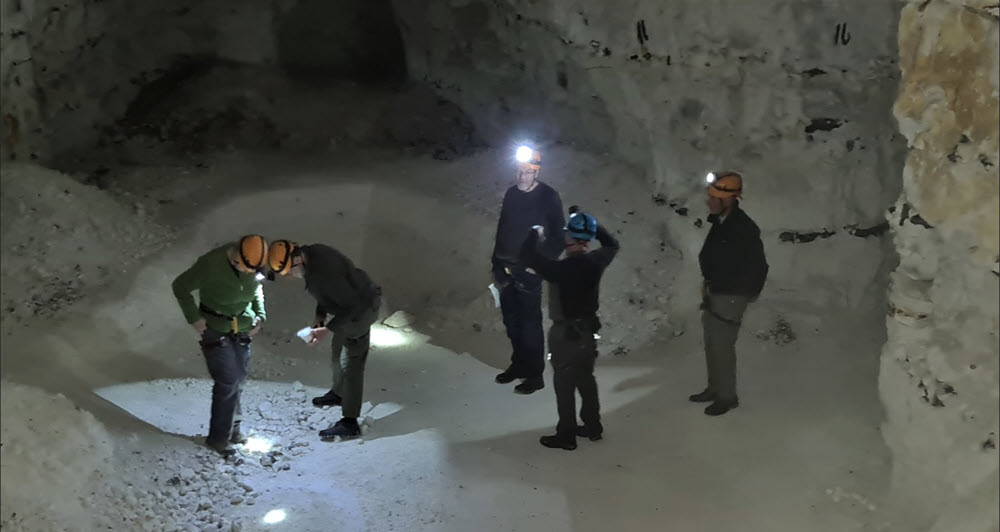
In May, the Berkshire Family History Society and the scouts gave me a long-awaited pleasure. Having heard stories of the chalk mines in Emmer Green, I had given up hope of ever visiting; but the wait was worth it.
The mines lay between Peppard and Kiln Roads in Emmer Green, with the entrance sitting within the bounds of the local scout troop, who acquired it when the land was sold off in the 1950s. The area around Reading is underlain by chalk and this natural resource has been exploited for centuries in opencast pits and deeper mines. Reading is renowned for its brickmaking industry, and there were many associated chalk mines, as chalk was added to the brick clay before firing to counteract shrinkage and to affect a paler colour. Chalk was also needed for the lime mortar used in bricklaying.
A brick kiln was recorded here in 1654 and at its peak, in the late 1800s, the site was producing 12,000 bricks per day and employing over 200 men. It closed in 1947 having lost out to its larger competitors in Reading. But enough of geology and history, what did we see and do?
Once togged-up in helmets and harnesses, and having undergone a safety briefing, we were led to the entrance. The original entrance is yet to be found so we climbed down a ventilation shaft on a fixed ladder. On the descent you see the brick-lined top of the shaft where it passes through the clay cap, and you continue down the seven-foot diameter shaft to the bottom around seventy feet below.
The mine passages, hewn out by the miners, radiate out following the chalk until reaching flint layers that indicate unstable sands and gravel above. As we walked the passages, which are lofty and glowed in the reflection of our head torches, we could see evidence of mining going into the distance much of which has yet to be explored. In most places the floor was flattish, but there are a number of ‘lifts’ showing different levels of excavation made at different times. The miners would have had little more than wheelbarrows to transport the chalk, so having a flat floor was important.
 As the caves have been explored, a number of the artefacts found have been grouped in a mini-museum. They include iron tools, a scallop shell used as a carrier for a candle, glass bottles and a pair of old shoes. Further along there are patches of graffiti dating back to the 1890s.
As the caves have been explored, a number of the artefacts found have been grouped in a mini-museum. They include iron tools, a scallop shell used as a carrier for a candle, glass bottles and a pair of old shoes. Further along there are patches of graffiti dating back to the 1890s.
At one point we turned off our torches to experience the absolute darkness that miners would often have worked in. It brought home what a frightening industry mining must have been.
In one of the chambers we found the remains of timber packing cases; this was where Reading Council stored documents and valuable items during WW2.
Having enjoyed the mine, we now had to escape. You climb the vertical ladder with a winch attached for safety. Surprisingly, the climb wasn’t as daunting as I expected, maybe knowing that I was just doing this for fun while the miners had had to get out after a long hard day of digging helped.
